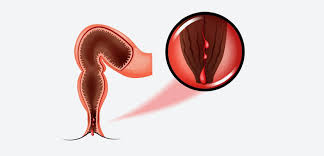Home > Department > Fissure Treatment

Fissure Treatment
An anal fissure is a small tear or cut in the lining of the anus, often resulting from passing hard stools or other factors. Fissures can cause pain, bleeding, and discomfort during bowel movements. Treatment aims to relieve symptoms, promote healing, and prevent recurrence.
Fissure Treatment Overview
An anal fissure is a small tear or cut in the lining of the anus, which can cause pain and discomfort, especially during bowel movements. Treatment for anal fissures often involves a combination of lifestyle changes, self-care measures, and, in some cases, medical interventions. Here are common approaches to fissure treatment:
Treatment Approaches:
Dietary Changes:
- Increasing fiber intake through fruits, vegetables, and whole grains can soften stools and make bowel movements less painful. Adequate hydration is also important.
Topical Medications:
- Over-the-counter creams or ointments containing ingredients like lidocaine, hydrocortisone, or nitroglycerin may help reduce pain and promote healing. Prescription-strength medications may be recommended in some cases.
Sitz Baths:
- Warm water baths, known as sitz baths, can help relieve discomfort and promote relaxation of the anal muscles. Soaking the affected area in warm water for 10-15 minutes several times a day can be beneficial.
Stool Softeners:
- Stool softeners or fiber supplements may be recommended to prevent constipation and reduce straining during bowel movements.
Hygiene Practices:
- Keeping the anal area clean and dry is essential for healing. Gentle cleaning with mild soap and water after bowel movements is recommended.
Prescription Medications:
- In some cases, healthcare professionals may prescribe medications like calcium channel blockers (e.g., diltiazem) to relax the sphincter muscles and promote healing.
Botulinum Toxin Injection:
- In cases where other treatments have not been effective, injection of botulinum toxin (Botox) into the anal sphincter may be considered to relax the muscles and promote healing.
Lateral Internal Sphincterotomy:
- In persistent cases where conservative measures fail, a surgical procedure known as lateral internal sphincterotomy may be recommended. This involves a small incision in the internal anal sphincter muscle to reduce muscle tension and promote healing.
Meet Our Doctors
Our administration and support staff all have exceptional people skills and trained to assist you with all medical enquiries. Doctors will be available from 8 am : 12 am , kindly call to confirm your Appointment.
- Departments
Urology
Gynaecology
Critical Care Medicine
Joint Replacement
Pediatric Clinic
Emergency Cases
Please feel welcome to contact our friendly reception staff with any general or medical enquiry call us.
+91 8208612746
Opening Hours
- Monday – Friday :- 8.00 – 7:00 pm
- Saturday :- 9.00 – 8.00 pm
- Sunday :- 10.00 – 9.00 pm
- Monday – Sunday : 24/7 Available



